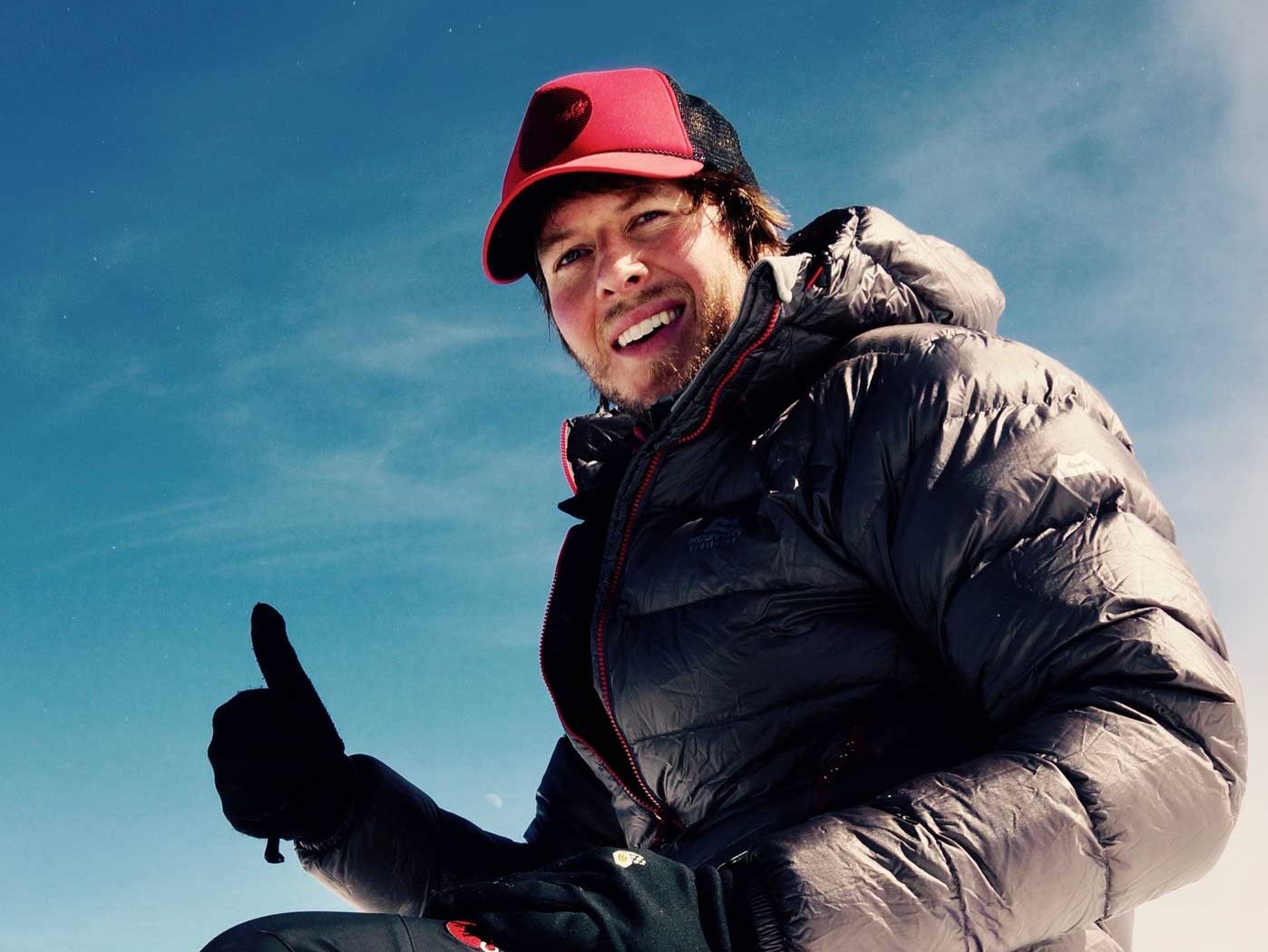Tackling a mile high vertical rockface is a remarkable test of resilience. So is tackling life and work. Here are 7 strategies you can use for both.
7 STRATEGIES TO HELP YOU TACKLE LIFE OR WORK LIKE YOU’RE TACKLING A ROCK FACE
As an adventurer and extreme adventure speaker, resilience is something I get asked about A LOT. On my last big expedition, had I not developed my resilience muscle, I probably would’ve pulled the plug long before achieving my goal. My entire support team got “cold feet” and abandoned our mission, leaving me high and dry – quite literally. You need to have a mindset of expecting the unexpected, however this was one complete and utter shock I simply wasn’t prepared for.
Ten months into a global pandemic, I think it’s fair to say that we’re all having to exercise our resilience muscle. But we don’t have to be exposed to vertical rockfaces or life-threatening viruses to build resilience. The fact is, we all face adverse situations in our lives and work every day. Fortunately, we can learn to build our resilience muscle – instead of training the body, we’re training the mind. Let me explain.
We can build resilience like a muscle – but instead of training the body, we’re training the mind.
I believe building resilience starts with measuring the usefulness of thoughts and changing the way you see things. Because when you look at things differently, it changes the way you feel. Once you stop, take a breath and change the way you look at a situation – even just slightly – you can find fresh perspectives and new motivation to drive you onwards (and in my case upwards) towards your goals. Here are 7 helpful strategies.
1. REFRAME THE WAY YOU SEE A CHALLENGE
Reframing is a simple but powerful technique I use to help see things differently. With reframing, the facts remain the same but the mind makes different meaning. Consider the North Face of the Eiger – a vertical mile of brittle rock and ice in the Swiss Alps considered to be amongst the most dangerous climbs in the world. Instead of being daunted by the enormity of the challenge, I told myself this was simply a (bloody) tough weekend. And it was. The ascent took two days and one night sleeping out on a narrow ledge in subzero temperatures (and did I mention my sleepwalking tendencies?). To clarify, this was an epic challenge that I initially believed was beyond my capabilities, so I committed an entire year of my life to training for this single weekend. When it came to crunch time, I was still daunted by the task ahead and knew I needed to look at it differently.
Now take workplace conflict. Rather than being quick to judge or jumping in defensively about a situation, reframing helps you pause, identify your assumptions and find interpretations that open the door to more helpful responses and resolution. The point is, we can’t control everything that happens, but we can see things differently and choose how we respond.

2. FOCUS ON WHAT YOU CAN CONTROL
We know that we can’t control everything. On expeditions, this might mean acknowledging objective hazards such as avalanches, and yes, in the workplace, setbacks look quite different. But for anyone facing a stormy situation, focusing on the things you have no control over makes you feel lost and powerless. Instead, you can determine what is possible for you to influence and change – such as your own preparation and approach – and let go of the rest.
3. LOOK AT THE BIGGER PICTURE
When you’re facing an obstacle head on, it can be hard to see the bigger picture – just like when you sit too close to the cinema screen. Taking a deep breath and stepping back (as long as there’s not a 1,800 m | 5,900 ft vertical drop – the height of the north face – behind you) can help ease anxiety, stop disruptive thoughts and reduce the tendency to get stuck on the small, often inconsequential details.
4. FOCUS ON ACTIONS RATHER THAN RESULTS
Talking about inconsequential details, as I climbed the North Face of the Eiger, I knew I approached what’s known as the “point of no return” – the point I would no longer be able to turn back and abseil or rappel down the face. As you can imagine, this increased the stakes and the pressure somewhat. I reminded myself that the steps I had to take were exactly the same up here a few miles high, just as if I was only 2 meters from the ground.
Reaching a goal is immensely satisfying and makes you feel on top of the world (in my case, quite literally). But focusing on the end result can seem like a Herculean task – and that can raise fear, anxiety and overwhelm that can lead to avoidance. Better to concentrate on the smaller actions required to get you there and the immediate steps in front of you. This technique alleviates fear of failure and allows for practical and achievable steps plus, importantly, incremental motivating wins along the way.
5. REMIND YOURSELF OF YOUR PURPOSE AND PASSION
It’s our inner beliefs and vision that keeps us powering toward our goals. In my case, I was driven towards my first world record by a passion for heights and my dream of reaching the top of the world. Checking in with your motivation, thoughts and feelings about your ‘why’ will reassure and validate your purpose. In turn, this provides a reinvigorated sense of meaning and determination to keep going, even in the face of great adversity.

6. EMBRACE RISK AND THE POSSIBILITY OF FAILURE
Being resilient is about embracing a challenge as an opportunity for growth and success while acknowledging the reality of potential failure. It’s important to have a positive outlook, yes – but we have to acknowledge our frailties too. Mental toughness recognises that taking a calculated risk is always part of the process and expecting everything to go smoothly all the time is unrealistic. Risk and opportunity come hand in hand.
7. HAVE THE COURAGE TO REACH OUT FOR A HAND WHEN YOU NEED IT
It might not seem obvious, but reaching out and asking for help is a great way to develop resilience. It allows you to stretch and grow through hardship and difficulty, knowing that you have options and support. I’d never achieve the things I do without my support team and the same goes for the workplace – a team with the same target has a much better chance of reaching it together than alone. Look for those who can fill your knowledge gap and whose insights open your mind to new possibilities.
WHATEVER THE HIGH-STRESS ENVIRONMENT, RESILIENCE IS THE KEY
Being resilient helps us push past discomfort and weather the storms of work, life and extreme adventure. And though it might not always be a life or death situation, I believe the key to overcoming any high-stress environment is mindset – appreciate that facing a stressful situation head-on is a chance to prove that you can excel in the face of adversity and seek out your inner voice that tells you, life is tough, but you’re tougher. Once you’re able to turn problems into actionable challenges, and obstacles into opportunities you can find potential you didn’t know you had.
If you’re keen to find out how I can help motivate and inspire you and your people with lessons learned from real-life experiences of building resilience, managing change and uncertainty, persevering through adversity, and strengthening mindset I’ve got lots to share. Stay tuned!
A resilient mindset turns problems into challenges, obstacles into opportunities and helps you find potential you didn’t know you had.
ABOUT DANIEL
Daniel Bull is a professional resilience speaker and sought-after motivational speaker on resilience as well as 3 x world record-breaking extreme adventurer who inspires audiences with his honesty and passion on topics of motivation, goal setting, teamwork, overcoming fear and adversity, and more. Find out more at www.unstoppabull.com.



